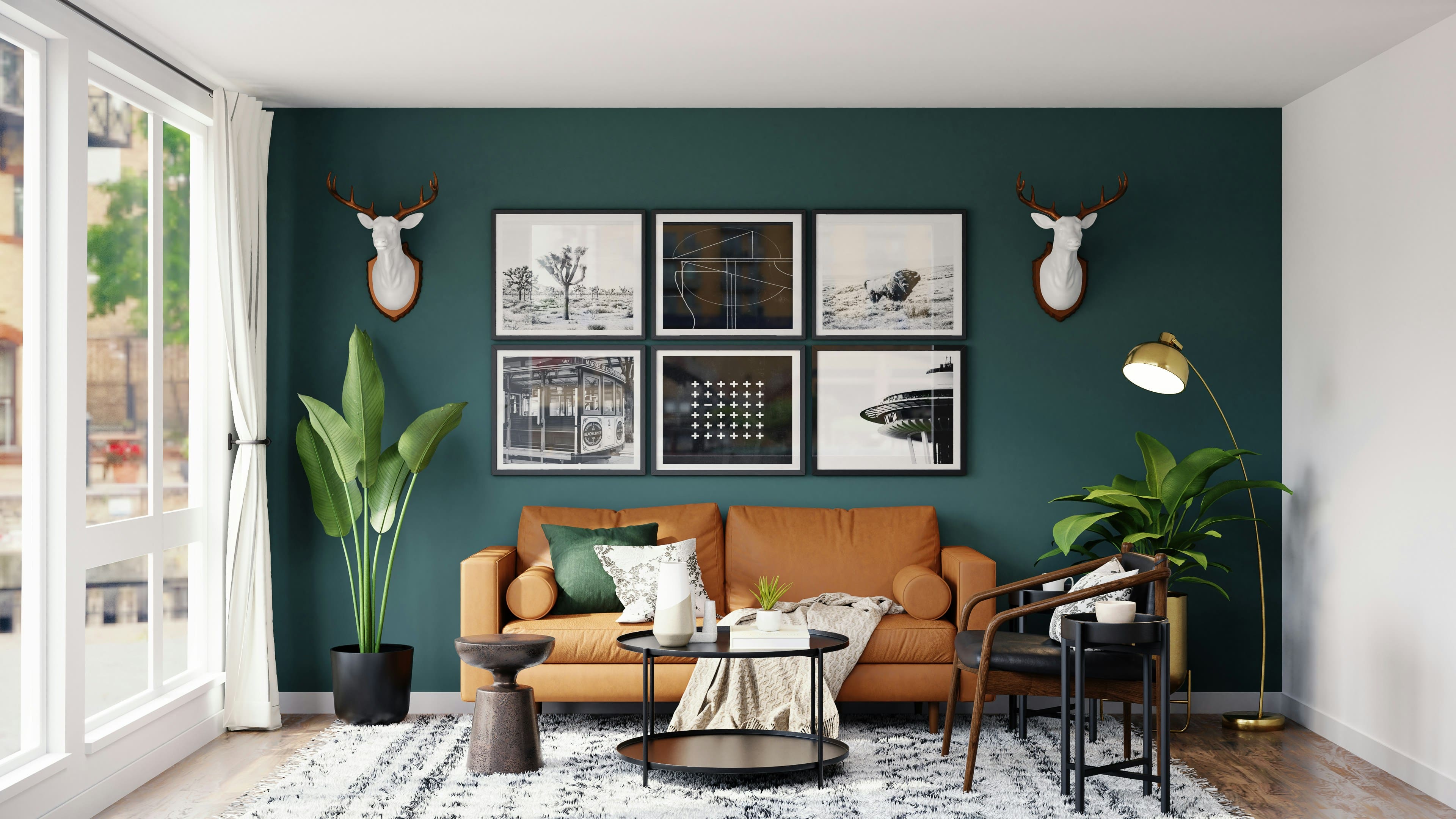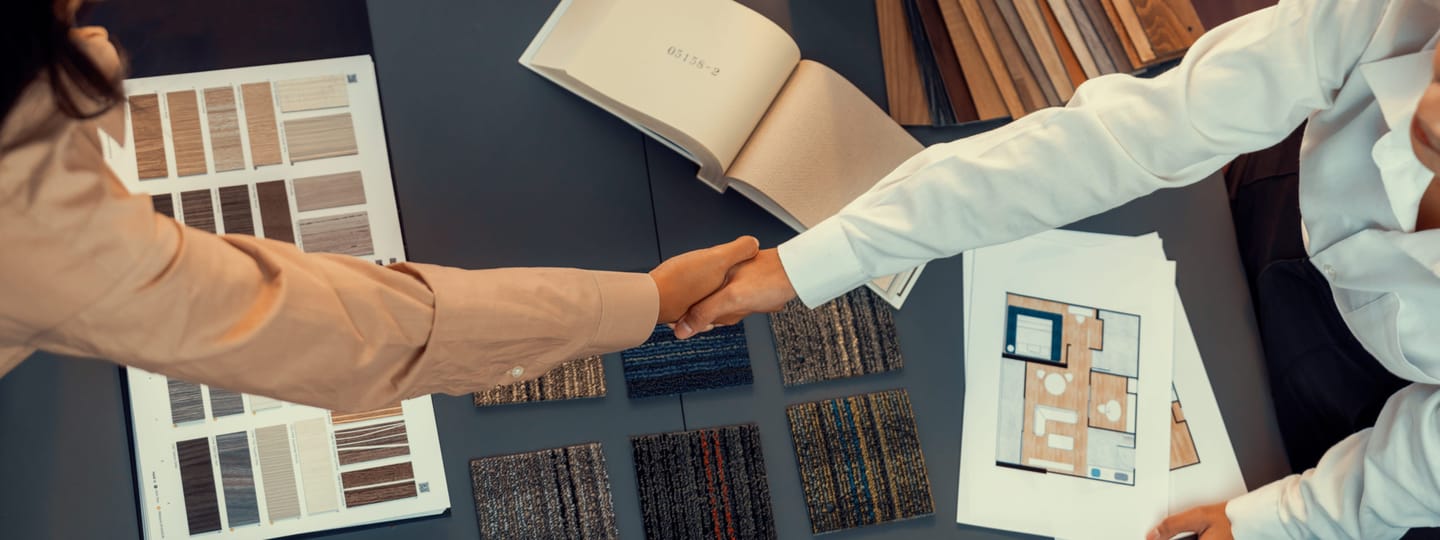Decorating a home is a pleasant and exciting process. Based on the allocated budget, choose interior decorating ideas from this article that you can implement to make your interior look wonderful.
How to Create a Design Project – Home Design Tips
It’s important to follow the steps of the interior design process:
- Create a project brief based on your wishlist. This is a list of work scope with detailed information about all the elements that need to be covered in the project, a list of needs and desires, as well as ideas regarding the budget and schedule.
- Prepare a sequential brief description of the design for each room, not all at once.
- Draw inspiration from various sources: travel, magazines, and trade shows will help you stay updated on new products and materials, as well as design ideas.
- Order slightly more materials to hedge yourself during interior design implementation.
Take Care of Lighting
Great interiors have diverse, layered lighting that can be individually controlled for different times of the day, events, or moods. Consider organizing three types of lighting at home: ambient, accent, and task.
- Ambient general lighting evenly fills the room.
- To highlight the features of a room, such as art pieces and decor, use accent lighting.
- Task lighting is a source of directed and adjustable light, such as reading and study lamps.
- It will be convenient if you illuminate a larger part of your room with various fixtures and lamps, preferably all equipped with dimmers.
Decorating Your Home
Choose the Right Pillows
Symmetrical arrangement of pillows makes things more formal and structured. Symmetry typically works well in bedrooms and living rooms. It often involves fewer pillows, so it can be used as a strategy to manage budget constraints.
Random pillows require more “style and error” checks than any other item. Pillow colors should be related to something else in the room, but beware of “perfect matches.”
Play with pillow shapes: larger ones should be placed behind, and smaller ones in front.

Curtain Secrets
Order curtains to full height, and be sure to stretch the rod or track straight to the ceiling. Better yet, hide the track inside the pelmet.
Chairs and Armchairs in the Interior
Treat them as room accessories. They are the perfect design tool to add boldness to any home interior. Use faux fur, minimalist prints, velvet, and vintage leather chairs as you like. But remember, sitting should be comfortable.
Colors in the Interior
“I come up with a basic color scheme for the entire house and then spread it from room to room,” says Gary McBurnie, a designer from Boston. “It manifests differently in different rooms.”
Blue goes with every color. Practically any shade of blue has no drawbacks. Here can be a link to here.
When decorating interior design and mixing colors and patterns, follow the rule of balancing playfulness and sophistication.
Don’t be afraid of dark colors that will act as accents in the room. “They make the whole space come alive,” says Jean Larette, an American interior designer.
Mix one batch of paint 50% lighter for the base and another 150% darker to achieve the perfect color palette. “This is a safe method for creating stripes on the wall. It’s also a very architectural way to use color,” says American designer Mary Douglas Drysdale.

Interior Design Tips and Tricks
- Get rid of clutter, unnecessary items, and chaos.Go through your house, room by room, and remove unnecessary items. Leave only functional and beautiful items.
- Store items properly.
If you want good storage, plan it with furniture craftsmen: wardrobes, bookshelves, and shelves are suitable for storing clothes, shoes, umbrellas, books, various decorative items, etc.
- No window? Use a mirror that visually expands the space and adds light when reflecting the electric lamp in it.
- Hide the radiator with a cabinet, making it part of the room. This way, it will turn into a nice little reading corner.
- Mix old and new decor: add items from antique shops to modern ones.
Home Decor Tips
Let’s talk about slow decorating. It’s the process of choosing items with purpose and intent that you’ll still love now and in ten years. Los Angeles interior designer Jenny Kane says:
“I believe there are many benefits to the process of slow decorating. Living in a space truly shows you what you’re missing and how you want to live in it.”
Additionally, slowing down and enjoying the process ensures that you won’t make rash decisions that you’ll later regret.
By taking your time, you have the opportunity to set a budget, think about where you want to spend money, and where you might want to be a bit more frugal.
Slow decorating allows you to understand your style and consider how it may evolve over time, allowing you to choose items that truly resonate with you.
New York interior designer Sasha Bikoff says:
“Design never ends. As people, we evolve, and so do our rooms. They are a constant reflection of our lives.”
Things should bring you joy, an undeniable sense of comfort, and satisfaction every time you look at them.
“If you’re spending money—no matter the amount—it should be on what ‘sparks joy,'” says Marie Kondo, organizing consultant.
“Good things come to those who wait” is true in most cases, especially when it comes to design. So, choose which items you’re willing to wait for. These are likely to be accessories rather than major pieces like sofas or bed frames.
Sasha Bikoff says: “It’s such a beauty—living in a space, feeling the energy, before making any impulsive decisions about what items you want to buy.”






